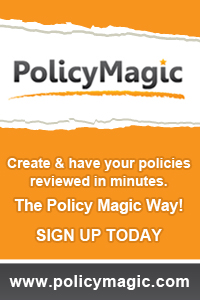
5 Psychological Triggers For Pricing Your Products
Have you heard of the expression: "People buy on emotion and justify their decision with logic?"
When it comes to price, perception is reality. People buy at one price and not at another because of psychological reasons that they might not even be aware of. However, research that tests hundreds of millions of consumers shows some interesting psychological aspects of pricing that you should be aware of when designing your online training courses and products. How can you utilize these findings?
1. INCREASE THE PERCEIVED VALUE OF THE PRODUCT WITH A HIGHER PRICE
Often, our first impulse is to lower the price. However, higher prices can sometimes attract MORE buyers. Price creates expectancy. Ladies, would you choose to buy an anti-wrinkle serum for $99 or face lotion for $5? Many of us will think, "Hmm. I am not putting a 5 dollar lotion on my face!" We expect the $99 serum to be much more effective than the $5 lotion even if there is no scientific proof to that! Therefore, instead of lowering the price, try to increase your products value by stacking irresistible bonuses.
2. INCREASE PERCEIVED VALUE OF YOUR PRODUCT BY CHOOSING THE RIGHT WORDS
As in the example above, the word "serum" has a higher value perception than the word "lotion". So does the word "gourmet". I can sell you the same hamburger that you buy in McDonald's for a much higher price if I call it a "gourmet hamburger" as your price expectation would be higher. I often use protein shakes as a part of my active workout routine. When I see a shake in the store for more than 4 bucks, I feel it is a rip off. However, in the gym there is a cool juice bar, where my friend sells shakes such as Metabolizer, or Wake Up Skinny for 5+ dollars. I gladly pay for it and even give him a tip.
3. CREATE THE PERCEPTION OF SAVINGS
Different price points create different perceptions. As with my opening example, you know a usual trick that many products are marked $9.99 instead of $10 because people perceive it to be much better deal. There is a theory that people pay more attention to the digits on the left. Also, a cost looks minimal if it is compressed to as few numbers as possible e.g. $234. But if there is a promotion or you list your bonuses then you want to add more zeros. So the customer will feel that he is saving 100s and 1000s of dollars.
MAKE IT EASY FOR YOUR CUSTOMER TO MAKE A DECISION
is compressed to as few numbers as possible e.g. $234. But if there is a promotion or you list your bonuses then you want to add more zeros. So the customer will feel that he is saving 100s and 1000s of dollars.
CREATE AN OFFER THE CUSTOMERS CANNOT REFUSE
Create discounts: People love feeling that they got a good deal. Discounts, from 10% to 75% off, almost never fail to attract buyers. Of course, the bigger the discount, the better! (Hint: you can create a discount without necessarily lowering your price.)
Lead a customer to your desired option: There is a "trade off effect" when people rationalize making less expensive options by avoiding making the most expensive one. So, it is smart to create a 3-option deal for your customers. For example, you want to sell your course for $550. Now create a higherend option, say $ 999 and a lower-end option, i.e. $325. Make the middle option an obvious good lead by adding some bonuses to it.

Dr. Marina Kostina is a distance learning expert, and an online business coach. She helps small business owners to transcend distances and leverage their work online without losing personal connections with their clients. Marina is also a co-author of an Amazon Bestseller, "The Golden Climate in Distance Learning" that helps online trainers connect, engage and enjoy the online environment.















